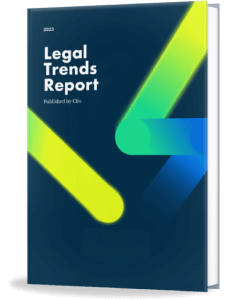A retainer fee payment, personal injury settlement, and insurance payout—these are all situations where a lawyer needs to use trust accounting.
Trust accounting refers to the practice of keeping separate track of client funds given in trust and a law firm’s operating funds. This ensures that funds are kept safe and managed with full transparency.
The practice can be daunting, even for seasoned lawyers. Yet, it doesn’t have to be. This article will demystify trust accounting for lawyers, covering everything from tips and best practices to creating your process.
Trust accounting is the process of tracking and monitoring client funds that are held in trust. These funds must be held until they are used for a specific client’s case, and cannot be accessed any earlier.
What is trust accounting?
While each jurisdiction has its own requirements, the main rules they share are:
- Funds in trust must not commingle with the firm’s funds.
- Firms must maintain detailed records of the money that comes in and out.
- Firms may only use a client’s money for their legal matters.
In other words, lawyers must keep a watchful eye on how much each client has in trust, as they can’t use one client’s money to cover expenses for another client.
Conceptually, it’s simple. Keep money that isn’t yours in a separate account so that you don’t accidentally spend it. This includes:
- Retainer fees
- Settlement funds
- Advanced costs
- Court fees
In practice, it’s far less simple.
Attorneys striking out on their own—either as newly-minted bar members or as veteran attorneys hanging their shingle—will have to deal with a frustrating obstacle course of bar rules.
Plus, you’ll likely encounter a system of banks and credit card processors that are far too often ignorant of said rules. If you, or your bank, make one mistake, it could have serious consequences.
The bottom line: It pays to know the basics of trust accounting.
What is a client trust account?
In short, a trust account is an account used by lawyers to hold money on behalf of clients.
There are two types of trust accounts. They can be:
- Pooled – accounts that hold funds for more than one client
- Separate – often for larger sums of money or when requested by the client
What is IOLTA?
When it comes to pooled trust accounts, one of the most well-known ones is IOLTA.
What does IOLTA stand for?
IOLTA stands for Interest on Lawyers' Trust Accounts.
This program manages client funds held in trust by lawyers, which are typically nominal in amount or deposited for a short period only. Any interest earned on these funds is pooled together and used for legal aid, increasing access to justice for those who are unable to afford it.
If you’re a lawyer in Texas, check out our comprehensive guide, What You Need to Know About IOLTA Accounts in Texas.
Common errors
Trust accounting can be complex. As mistakes may come with serious repercussions, lawyers need to be aware of all laws and rules when dealing with these accounts. Here are a few errors to watch out for.
- Commingling funds. Lawyers must always keep their operating or personal funds separate from a client’s unearned funds. Commingling funds can have serious consequences for a law firm.
- Forgetting to keep accurate records. Accurate and detailed records are an important part of trust accounting for lawyers. This includes records of all transactions, including deposits, withdrawals, and transfers. Legal software can be a powerful tool in streamlining this process.
- Not keeping clients updated. Lawyers are required to keep clients informed on the status of their trust account, including its balance and any transfers affecting their funds.

Best practices
1. Have an account
Having a trust account to comply with legal regulations might seem obvious. And yet, many attorneys forego them.
However, in some jurisdictions, you can’t even practice law without having an account—even if it’s for pro bono work. It’s common for law firms to operate one or more pooled trust accounts depending on the nature and needs of the practice.
For example, law firms that handle real estate matters may require several pooled trust accounts at different financial institutions. On the other hand, a criminal practice may require only one pooled account.
When setting up a new account, ask your financial institution to provide trust account statements at the end of the reporting period. This will ensure that the financial institution reports all activities and balances in your trust account at month-end and year-end dates.
2. Use the account as little as possible
Errors can leading to malpractice suits, so many attorneys choose to structure their fees and payment plans to avoid using their trust accounts.
Avoiding using your trust accounts means:
- Less bar oversight
- Reduced risk of accidents jeopardizing one’s license
- Fewer fund transfers between accounts
For example, an exemption in Missouri allows lawyers to forego their trust account for flat-fee services under $2,000.
In response to this, some attorneys keep their flat fee amount under $2,000. Others charge an “intake fee” at the start of the case and the remainder of the flat fee is kept under $2,000 to be exempt.
Their reasoning? If you don’t use your trust account, it’s easier not to violate the rules as mandated by your jurisdiction—even if it’s at the cost of cash flow.
It’s unclear whether or not charging such an “intake fee” doesn’t count as part of this limit. This is exactly the sort of murky question that keeps lawyers up at night.
The trust accounting process
If you are using trust accounting at your firm, you can follow the process below:
- A client or third party, like an insurance company, hands your office a check for money that isn’t yours—such as unearned legal fees or settlement money.
- You deposit this money into your trust account. Depending on your jurisdiction’s rules, if the sum is large enough and belongs to a single client, you may open a new interest-bearing trust account solely for that client. Otherwise, it goes into your normal, pooled attorney trust account.
- As you earn the funds, or are required to pay off fees, expenses, or third-party claims, you’ll typically write a check from your trust account to pay the amount into your operating account (or electronically transfer yourself your earned fees).
- When a case ends, and all claims are settled, any remaining amount is refunded to the client.
- If there is a dispute over your fees, and you have client money in the trust account, check with your state bar—many require you to hold that money in the trust account while the fee dispute is handled.
- Most states have a trust account reconciliation requirement. North Carolina, for example, requires attorneys to reconcile bank statements with their in-house ledgers or other record-keeping systems every quarter. Doing this regularly is a must—state bars are far more lenient with mistakes if the issue is detected quickly and the firm has been diligent about record keeping.
Putting it all to work
While trust accounting seems like a relatively straightforward concept, keeping track of client trusts can get complicated if you’re managing accounts for multiple clients.
That’s why you need to be diligent and ensure that each account is tracked with a full paper trail of statements so you can ensure that no funds were accidentally used improperly.
As long as you’re careful, diligent, and regularly check your statements, the process doesn’t have to be scary.
And, using a software tool like Clio that has safeguards in place to give you peace of mind over trust transactions will help your firm as you scale.
Resources to help with trust accounts

For many lawyers, accounting is a pain point in running a law firm. The good news? Technology can change that—especially legal-specific trust accounting software.
Many attorneys turn to QuickBooks or Xero for managing their accounting and record keeping, rather than Excel spreadsheets. Both integrate with Clio Manage, which will save time on data entry. That’s because any trust account update made in Clio will be automatically updated in QuickBooks or Xero.
For trust accounting and client-level transactions, Clio has several features for lawyers, including the ability to:
- Reconcile directly in the software
- Run built-in legal trust account reports
- Set up separate ledgers for trust and operating accounts
- Build invoices that comply with regulations
Another important resource is your state bar. They produce an unfathomable amount of literature, CLEs, and seminars on trust accounts. Knowing the basics and reading as much as you can is your best bet for staying compliant.
Keep in mind that through Clio’s Bar Associations program, you may be eligible for an exclusive discount on Clio products. For more information, visit our Bar Associations page and select your bar association.
For more resources, be sure to check out our accounting resources.
Final notes on trust accounting for lawyers
After you’ve read more about trust accounting and checked your local rules, what do you do next?
Well, you can start by applying this information to how you address the practice in your firm. Here are a few final pointers:
- Set clear policies. Spell out your office policies for trust accounting. This will ensure a helpful assistant doesn’t accidentally commingle funds or commit some other clerical error.
- Set up systems to guard against error. Do the simple stuff, like using different colored checks, to keep your name off the disciplinary list.
- Get a little help from technology. Ditch the Excel spreadsheet or paper ledger. Use some of the available legal software for trust accounting—like Clio—to track your transactions and reconcile records with bank statements.
It may seem like a lot to handle, but nobody ever said entrepreneurship was going to be easy. With trust accounting, like all things, once you put good habits into practice, they become second nature over time.
Want to learn more about how cloud-based practice management software can help you manage your trust accounting? Schedule a personalized demo with our team.


